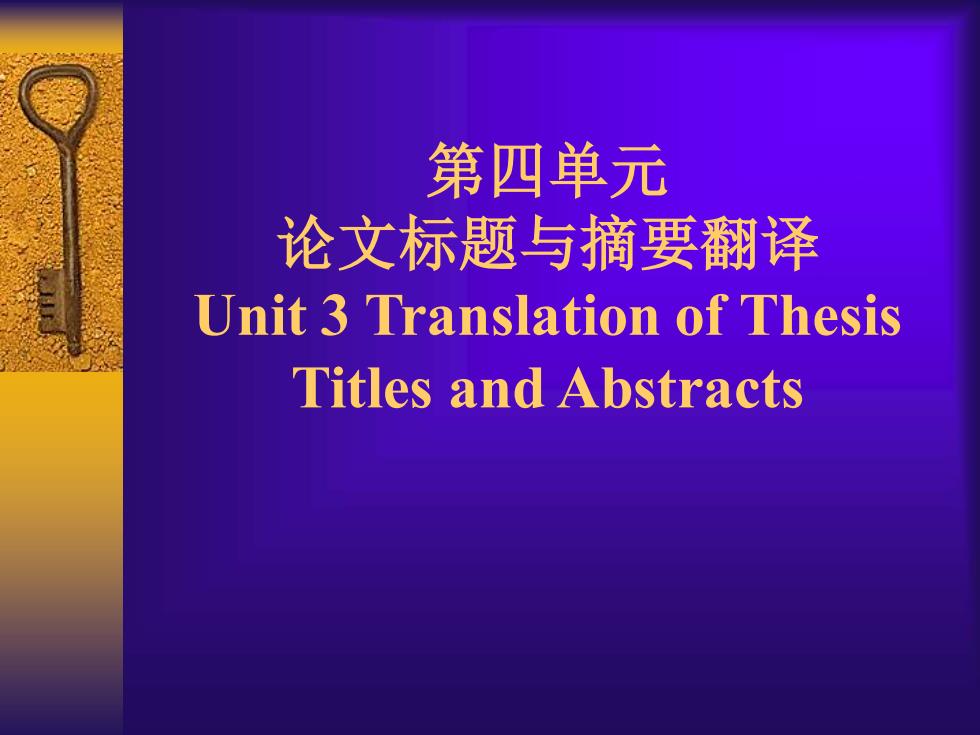
第四单元 论文标题与摘要翻译 Unit 3 Translation of Thesis Titles and Abstracts
第四单元 论文标题与摘要翻译 Unit 3 Translation of Thesis Titles and Abstracts
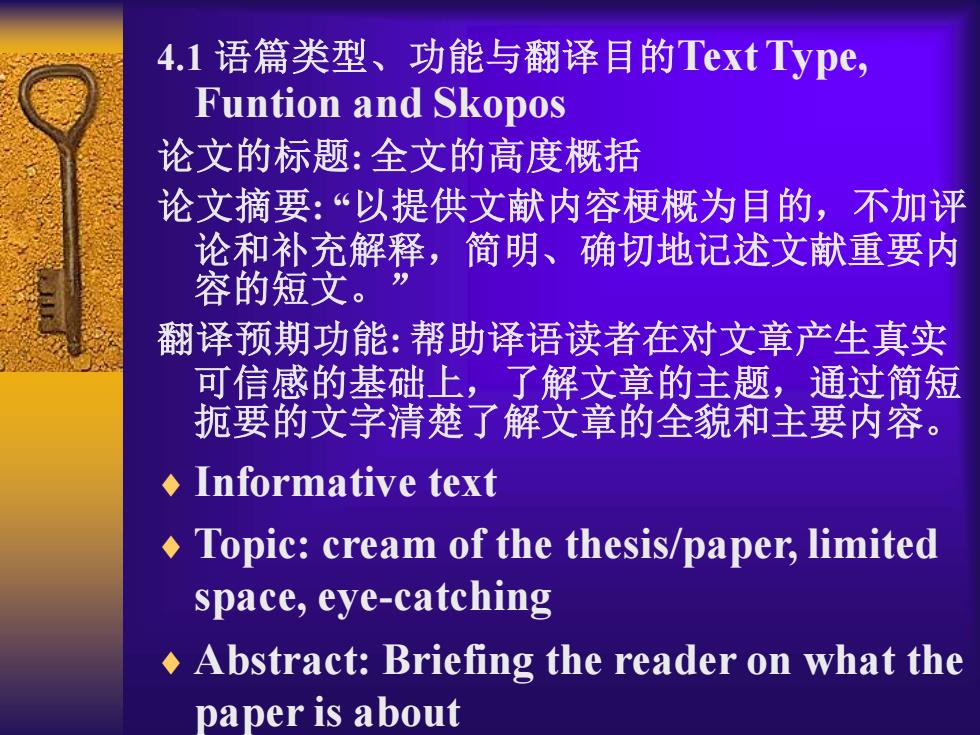
4.1语篇类型、功能与翻译目的Text Type, Funtion and Skopos 论文的标题:全文的高度概括 论文摘要:“以提供文献内容梗概为目的,不加评 论和补充解释,简明、确切地记述文献重要内 容的短文。 翻译预期功能:帮助译语读者在对文章产生真实 可信感的基础上,了解文章的主题,通过简短 扼要的文字清楚了解文章的全貌和主要内容。 ◆Informative text Topic:cream of the thesis/paper,limited space,eye-catching Abstract:Briefing the reader on what the paper is about
4.1 语篇类型、功能与翻译目的Text Type, Funtion and Skopos 论文的标题: 全文的高度概括 论文摘要: “以提供文献内容梗概为目的,不加评 论和补充解释,简明、确切地记述文献重要内 容的短文。” 翻译预期功能: 帮助译语读者在对文章产生真实 可信感的基础上,了解文章的主题,通过简短 扼要的文字清楚了解文章的全貌和主要内容。 Informative text Topic: cream of the thesis/paper, limited space, eye-catching Abstract: Briefing the reader on what the paper is about
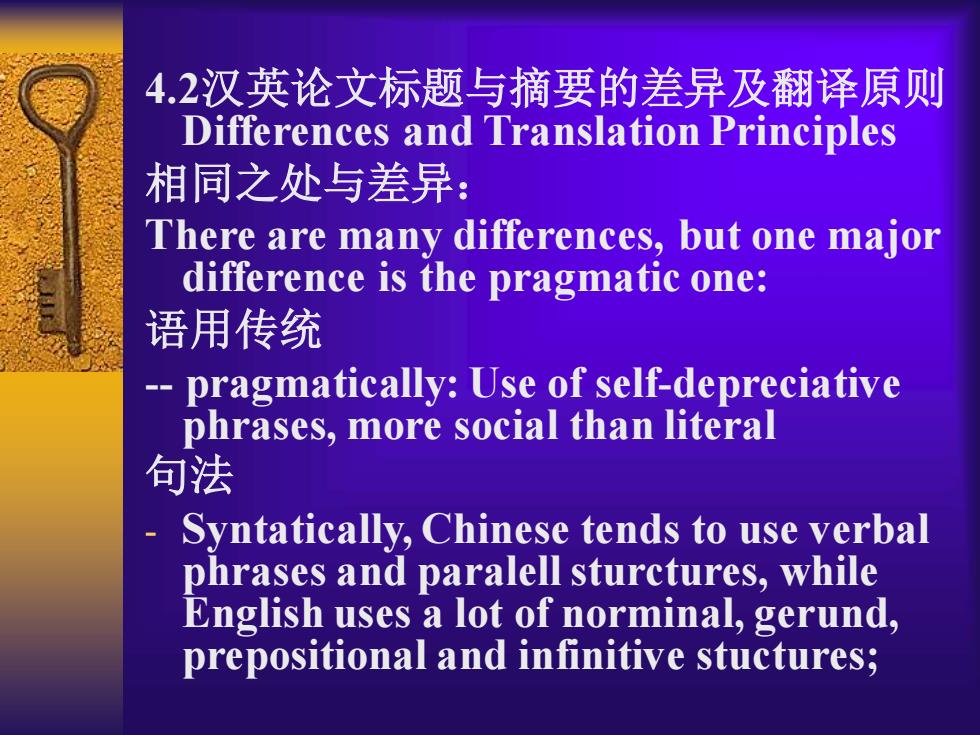
4.2汉英论文标题与摘要的差异及翻译原则 Differences and Translation Principles 相同之处与差异: There are many differences,but one major difference is the pragmatic one: 语用传统 -pragmatically:Use of self-depreciative phrases,more social than literal 句法 Syntatically,Chinese tends to use verbal phrases and paralell sturctures,while English uses a lot of norminal,gerund, prepositional and infinitive stuctures;
4.2汉英论文标题与摘要的差异及翻译原则 Differences and Translation Principles 相同之处与差异: There are many differences, but one major difference is the pragmatic one: 语用传统 - pragmatically: Use of self-depreciative phrases, more social than literal 句法 - Syntatically, Chinese tends to use verbal phrases and paralell sturctures, while English uses a lot of norminal, gerund, prepositional and infinitive stuctures;
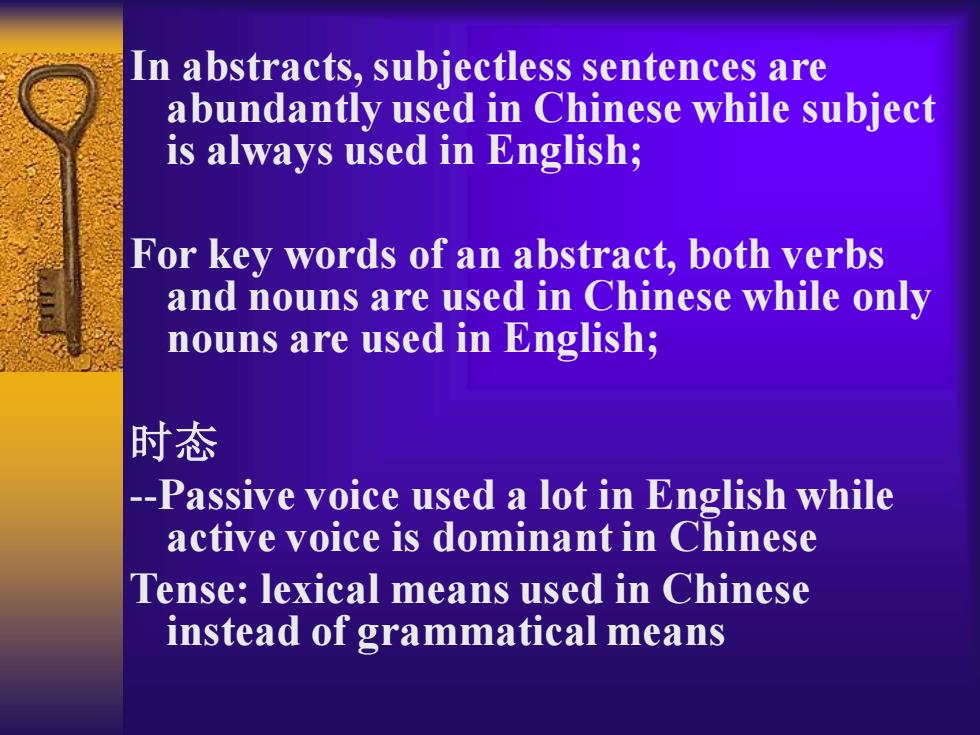
In abstracts,subjectless sentences are abundantly used in Chinese while subject is always used in English; For key words of an abstract,both verbs and nouns are used in Chinese while only nouns are used in English; 时态 -Passive voice used a lot in English while active voice is dominant in Chinese Tense:lexical means used in Chinese instead of grammatical means
In abstracts, subjectless sentences are abundantly used in Chinese while subject is always used in English; For key words of an abstract, both verbs and nouns are used in Chinese while only nouns are used in English; 时态 -Passive voice used a lot in English while active voice is dominant in Chinese Tense: lexical means used in Chinese instead of grammatical means
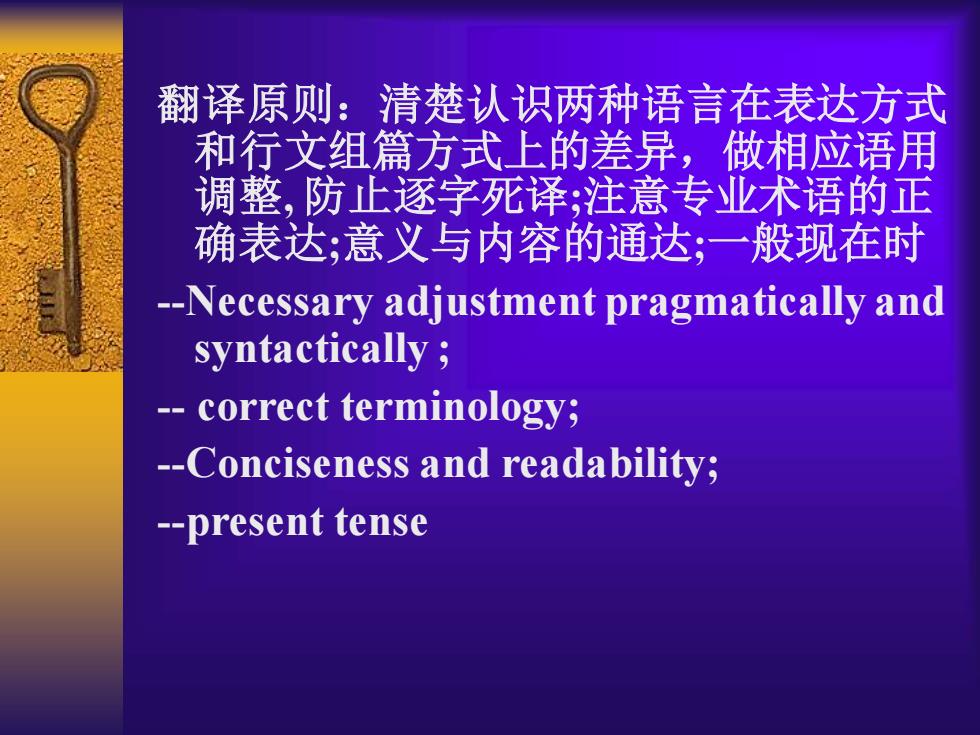
翻译原则:清楚认识两种语言在表达方式 和行文组篇方式上的差异,做相应语用 调整,防止逐字死译注意专业术语的正 确表达;意义与内容的通达;一般现在时 -Necessary adjustment pragmatically and syntactically -correct terminology; -Conciseness and readability; -present tense
翻译原则:清楚认识两种语言在表达方式 和行文组篇方式上的差异,做相应语用 调整, 防止逐字死译;注意专业术语的正 确表达;意义与内容的通达;一般现在时 -Necessary adjustment pragmatically and syntactically ; - correct terminology; -Conciseness and readability; -present tense